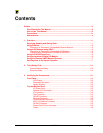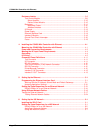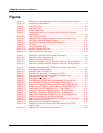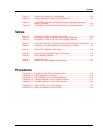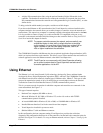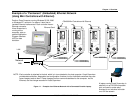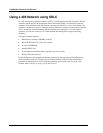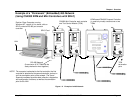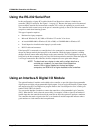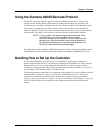
CS4000 Mini Controller with Ethernet
Page
1-2
T-38324-A 39-30-38324
• A digital I/O communications link, using the optional Interbus-S digital I/O module in the
controller. The Interbus-S module does not connect the controller to a network, but does allow
I/O communications between the controller and a Programmable Logic Controller (PLC), or other
similar device.
To help you decide which method you require, read the rest of this chapter.
If you choose the Ethernet or 485 network method, the Visual Supervisor software installed on the
computer attached to the network allows you to make changes to controllers across the network and
monitor them. This supervisory computer is commonly referred to throughout this manual as the host.
It is also possible to connect a laptop, via a cable and the RS-232 compatible serial port, to any
controller on the network and make individual changes to that controller. Refer to Using the RS-232
Serial Port later in this chapter for details.
NOTE: To program controllers across the network, and successfully use
an attached laptop to view, edit or collect data from a controller
on the network, you must have Visual Supervisor version 3.20 or
higher installed on the host and laptop computers, and DCM
4.06 or higher installed on the controllers.
The CS4000 Mini Controller with Ethernet also has an optional Application Program Interface (API)
which you can have built into each controller. This allows you to collect rundown data and send it to a
software application across the Ethernet network, other than Visual Supervisor.
NOTE: The API can be run concurrently with Visual Supervisor allowing
you to collect rundown data in Visual Supervisor and also send it
to another application, via the API.
Using Ethernet
The Ethernet is a Local Area Network (LAN) technology developed by Xerox and then further
developed by Xerox, Digital Equipment Corporation (DEC), and Intel. The CS4000 Mini Controller
with Ethernet uses the most commonly installed type of Ethernet cable, 10Base-T. This type of cable
can provide transmission speeds of up to 10 million bits per second (mbps) and uses the standard
Transmission Control Protocol/Internet Protocol (TCP/IP) communications protocol.
This is a permanent mode of operation in which the computer and controllers are connected via the
same network hub. See Figure 1-1.
This type of network requires:
• Pentium Class computer (500 MHz or above).
•
Microsoft Windows 95, 98, 2000, or Windows NT, version 4.0 or above with TCP/IP
communications protocol installed.
•
At least 64 MB RAM for Windows 95, 98 or 2000, or 128 MB RAM for Windows NT.
•
Installed Ethernet Interface Card in the controller and the computer.
•
Visual Supervisor installed in permanent mode.
• Shielded 10Base-T cable and Ethernet connector.
In this configuration, the host computer running Visual Supervisor provides data collection,
diagnostics and configuration functions for all the controllers, but the hub is the connection point for
the LAN. See Figure 1-1 for details. To set up an Ethernet network, refer to Chapter 5. Setting Up the
Ethernet.




